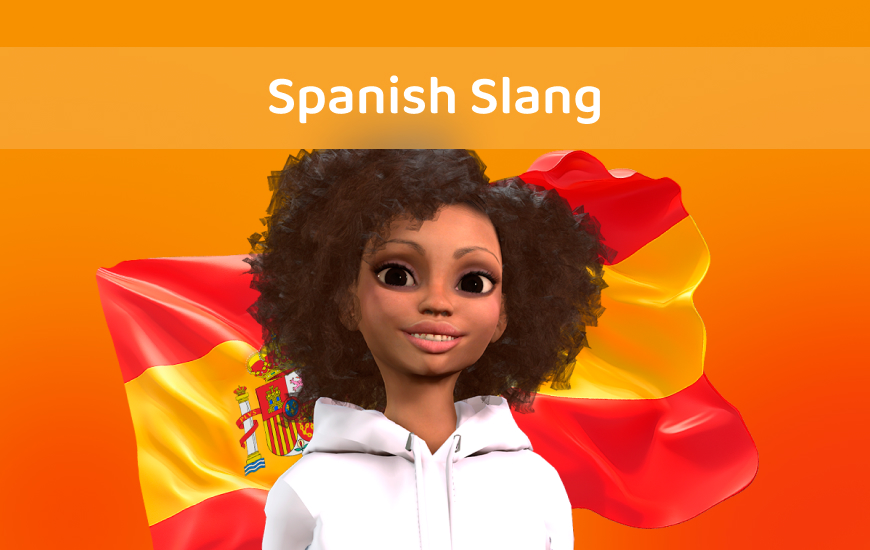¡Hola, trendsetter! I’m Lucia, your guide to the fascinating and colorful world of Spanish slang. Just like fashion, slang evolves and adapts across regions, giving each country its own unique flair. Whether you’re planning to visit Spain, Argentina, or Mexico, knowing the right slang words will help you sound authentic and connect with locals like a pro. Let’s explore how “cool” changes from one country to another!
Why Slang is the Soul of a Language
1. Slang is About Expression
Slang words add color and personality to language.
- Example: Instead of saying muy bueno (very good), in Spain you might say, ¡Qué guay! (How cool!). It instantly makes your comment feel more local.
- Slang reflects how people actually talk, not just what’s grammatically correct.
2. It Helps You Build Connections
Using slang shows you’ve taken the time to learn the nuances of the language.
- Example: In Argentina, calling someone che (hey) instead of tú (you) makes you sound more approachable and relatable.
- Locals are more likely to engage with you when you use their everyday language.
3. It’s Packed with Cultural Meaning
Slang words often carry unique stories or reflect trends in a particular region.
- Example: The Mexican slang chido (cool) captures the country’s playful vibe, while Colombia’s bacano (awesome) conveys excitement with a local flair.
Slang is not something you can easily learn from textbooks, but with the Praktika Spanish-learning app you can blend right in with the locals.
“Cool” Across the Spanish-Speaking World
In the Spanish-speaking world, being “cool” comes in many flavors, depending on where you are. Each region has its own unique word to capture what’s trendy, exciting, or impressive. Let’s explore how to say “cool” in different countries, complete with examples to help you sound authentic wherever you go!
Spain: Guay
In Spain, guay is the go-to word for “cool.” It’s casual, versatile, and used by all ages.
- Example Sentences:
- “Tu chaqueta es súper guay.” (Your jacket is super cool.)
- “¡Qué guay está esta canción!” (How cool is this song!)
- “El concierto de anoche fue guay del Paraguay.” (Last night’s concert was amazingly cool.)
Mexico: Chido/Padre
Mexicans have not one but two popular words for “cool”: chido and padre.
- Example Sentences:
- “Esa película estuvo bien chida.” (That movie was really cool.)
- “Qué padre está tu coche nuevo.” (Your new car is so cool.)
- “¿No crees que este lugar es chido?” (Don’t you think this place is cool?)
Argentina: Copado
In Argentina, copado is a favorite way to express something cool or impressive.
- Example Sentences:
- “Ese diseño está copado.” (That design is cool.)
- “Conocí a una persona súper copada en la fiesta.” (I met a really cool person at the party.)
- “Qué copado está este lugar para sacar fotos.” (This place is so cool for taking photos.)
Colombia: Bacano
Colombians use bacano to describe something awesome or enjoyable.
- Example Sentences:
- “Este restaurante tiene un ambiente bacano.” (This restaurant has a cool vibe.)
- “Tu idea para el proyecto es súper bacana.” (Your idea for the project is super cool.)
- “¿No te parece bacano este lugar para relajarse?” (Don’t you think this place is cool to relax?)
Chile: Filete
In Chile, filete means “cool,” often describing something high-quality or excellent.
- Example Sentences:
- “La película estuvo filete.” (The movie was cool.)
- “Tu presentación fue filete. Todos quedaron impresionados.” (Your presentation was cool. Everyone was impressed.)
- “Este café tiene un estilo filete.” (This café has a cool style.)
Curious about another country? Meet me in the Praktika app and we’ll practice that country’s slang for “cool”!
More Slang Words You’ll Want to Know
“Cool” is just the beginning—each Spanish-speaking country has a treasure trove of slang words that can spice up your vocabulary and make your conversations more authentic. Let’s explore some must-know slang from different regions, complete with examples to help you use them confidently!
1. Friends and People
Slang for people is essential for casual conversations.
- Spain: Tío/Tía (dude/girl)
- “Ese tío es buenísimo jugando al fútbol.” (That dude is amazing at soccer.)
- “¿Has visto a esa tía con el vestido rojo? Espectacular.” (Did you see that girl in the red dress? Stunning.)
- Mexico: Cuate (buddy)
- “Voy al cine con mi cuate esta noche.” (I’m going to the movies with my buddy tonight.)
- “Es un cuate de toda la vida.” (He’s been my buddy forever.)
- Argentina: Che (hey)
- “Che, ¿cómo estás?” (Hey, how are you?)
- “Che, ¿te gusta esta canción?” (Hey, do you like this song?)
2. Fun and Excitement
These expressions add energy to your conversations.
- Colombia: Una nota (awesome)
- “Esa fiesta fue una nota.” (That party was awesome.)
- “Conocí a un grupo de personas súper nota.” (I met an awesome group of people.)
- Peru: Paja (cool)
- “El paisaje aquí es paja.” (The scenery here is cool.)
- “Ese restaurante es bien paja. Lo tienes que probar.” (That restaurant is really cool. You have to try it.)
3. Compliments and Approvals
Learn to give positive feedback like a local!
- Mexico: Padre (awesome)
- “Ese diseño está padre.” (That design is awesome.)
- “Tu presentación fue súper padre.” (Your presentation was awesome.)
- Chile: Bacán (great)
- “Tu idea está bacán.” (Your idea is great.)
- “Qué bacán que podamos salir hoy.” (How great that we can go out today.)
4. Describing Situations
Get creative with these expressions for situations.
- Spain: De lujo (fancy/luxurious)
- “La cena fue de lujo.” (The dinner was fancy.)
- “Este hotel es de lujo.” (This hotel is luxurious.)
- Argentina: Buena onda (good vibes)
- “El lugar tiene una buena onda increíble.” (The place has an amazing vibe.)
- “Qué buena onda es trabajar contigo.” (It’s such good vibes working with you.)
Tips to Avoid Slang Slip-Ups
1. Know Your Audience
Always consider who you’re talking to and adjust your slang accordingly.
- Example: In Argentina, saying che (hey) is friendly and casual, but it might confuse someone from Spain.
- Instead of, “Che, ¿vamos al cine?” (Hey, are we going to the movies?), say, “¿Vamos al cine?” for a more neutral tone.
2. Learn Regional Variations
Words like guay (cool) in Spain or bacano in Colombia show how slang varies widely. Praktika’s AI tutors, like me, help you practice Spanish slang and phrases from specific countries. This helps you tune in to regional differences and avoid using the wrong word.
- Example: Saying padre (cool) in Mexico works, but in Chile, you’d want to use filete. Praktika’s lessons will guide you in picking the right word based on the region.
3. Observe Before You Speak
If you’re unsure about slang, listen to how locals use it first.
- Pay attention to context: If everyone’s saying qué chido in a group, it’s safe to try it out!
- In more formal settings, stick to standard Spanish until you’re comfortable.
4. Double-Check the Meaning
Some slang words have double meanings or can be offensive in certain regions.
- Example: In Mexico, fresa means “snobby” or “posh,” but in other countries, it’s just “strawberry.” Be cautious before dropping slang into a conversation.
5. Practice with Feedback
The Praktika app lets you try out slang phrases with your tutor and receive real-time corrections. You’ll know if your pronunciation or context is off before using it with native speakers.
- Practice saying, “¡Qué bacán tu idea!” (Your idea is great!) in a Chilean accent and adjust until it feels natural.
Ready to sprinkle some slang magic into your Spanish? With me and my fellow AI tutors in the Praktika app, you can practice regional slang, get instant feedback, and learn to chat like a pro. Download the app today and let’s make your Spanish as cool as filete. ¡Empieza hoy y diviértete aprendiendo!

From Lucia
Lucia is a passionate Spanish and English tutor from Buenos Aires, Argentina, with a flair for creativity and a love for cultural exploration. A graduate of Parsons School of Design, she combines her global perspective with her love for languages to make learning fun and practical. Whether you’re mastering slang or preparing for real-world conversations, Lucia’s engaging lessons will help you express yourself with confidence and style.
